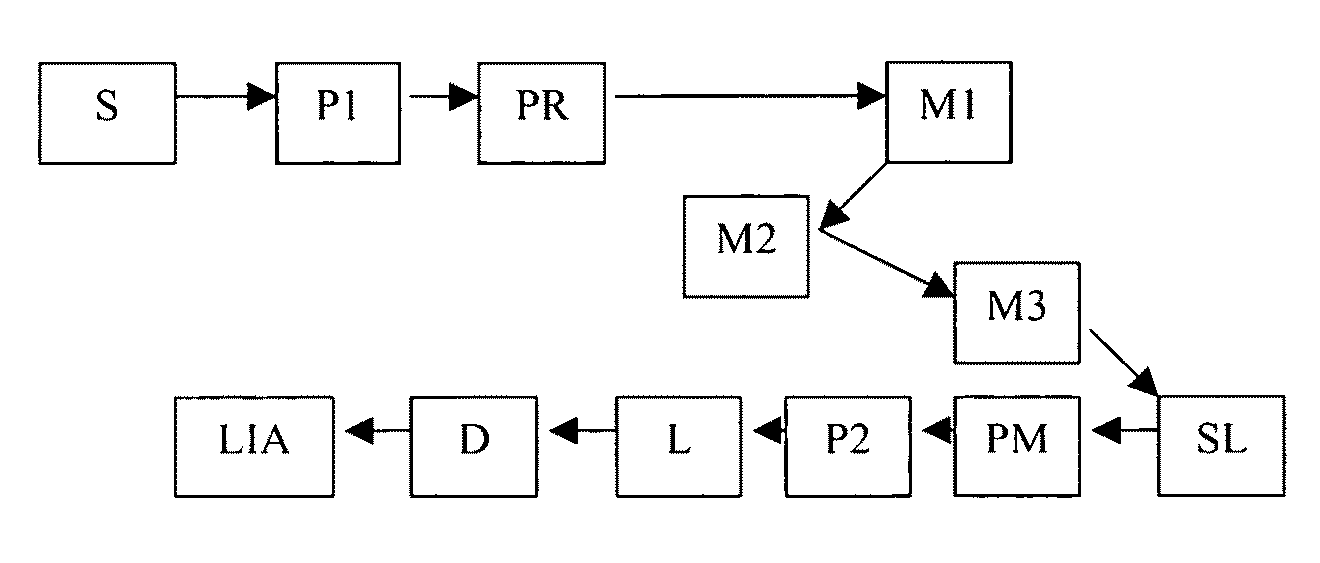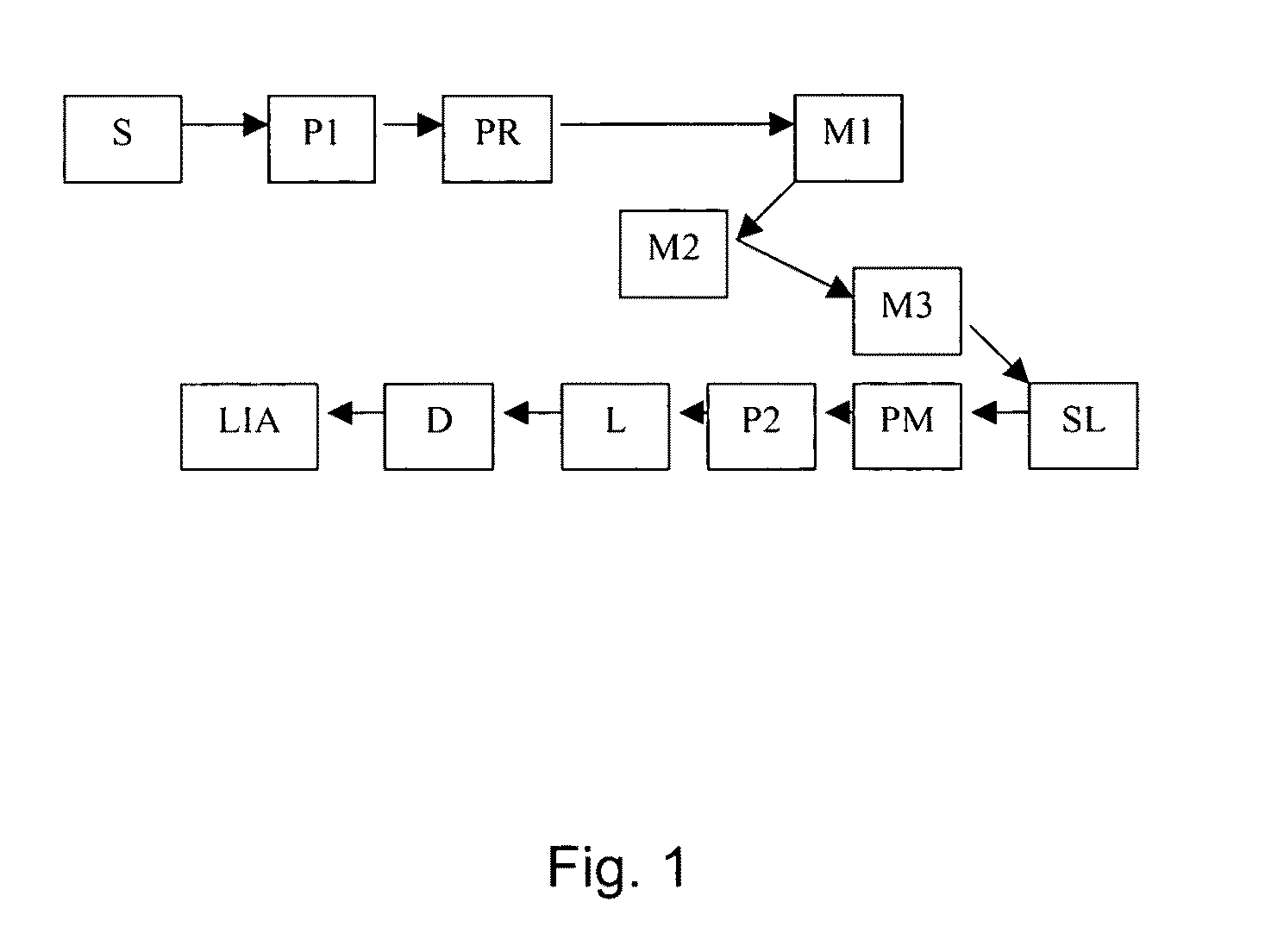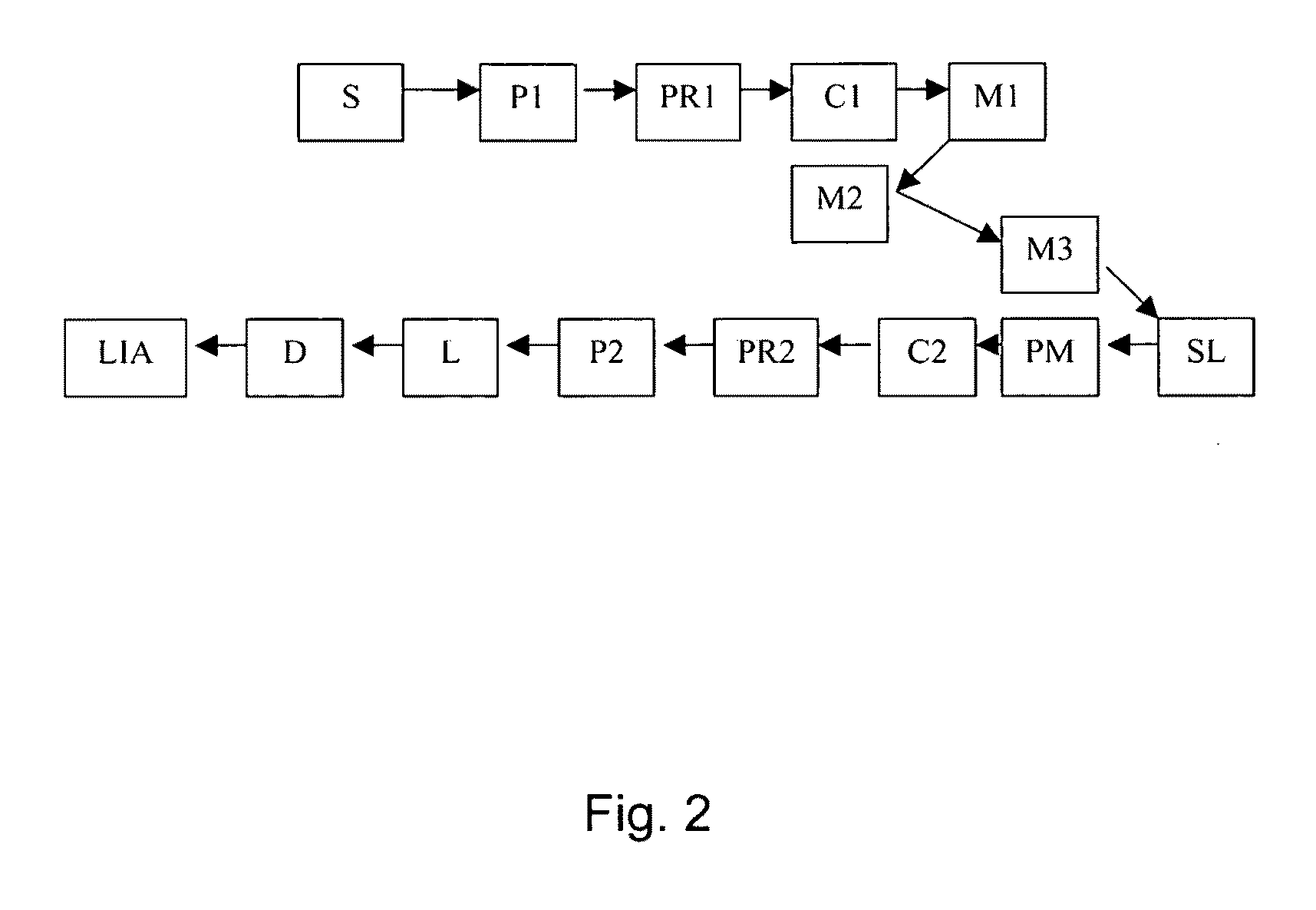Optical methods for real time monitoring of tissue treatment
a tissue treatment and optical method technology, applied in the field of medical technology, can solve the problems of difficult or impossible tracking of tissue treatment progress, undesired tissue modification (e.g., collagen denaturation of a specific area), and the extent of desired tissue modification (e.g., damage to adjacent tissues, etc.) are difficult or impossible to track, and the lack of real time monitoring of such modifications is even more problemati
- Summary
- Abstract
- Description
- Claims
- Application Information
AI Technical Summary
Benefits of technology
Problems solved by technology
Method used
Image
Examples
example 1
Measurement of DoLP and θ
[0171]The instrument configuration diagrammed in FIG. 3 was used to perform measurements on several sample types (i.e., mirror, half wave plate, and bovine tendons). In FIG. 3 the system components comprise: detector D (a silicon photodiode with built-in trans-impedance amplifier), lens L (having a 1″ diameter and 75 mm FL), lock-in amplifier LIA (With reference to source modulation. As described below, the source is modulated at 1 kHz. This modulation signal is also supplied as a reference signal for the lock-in amplifier.), mirror M1 (0.5″ diameter round), mirror M2 (0.5″ diameter round), mirror M3 (1.0″ diameter D-shaped), polarizer P1 (source polarizer), polarizer P2 (source polarizer), parabolic mirror PM (90 degree off-axis), laser source S (808 nm, 200 mW, 1 kHz, square-wave modulated), and sampling lens SL (a split lens, 1.0″ diameter PCX, 15 mm FL, 1 mm black ABS spacer).
[0172]In the measurements, the input polarization angle was maintained at verti...
example 2
Automated DoLP Measurement
[0177]The instrument outlined in FIG. 7 was constructed to automate collagen birefringence measurement. The arrows in the Figure indicate the direction of the optical beam. The system components in FIG. 7 include: detector D (silicon photodiode with built-in trans-impedance amplifier), lens L (1″ diameter, 75 mm FL), lock-in amplifier LIA (reference to source modulation), mirror M1 (0.5″ diameter round), mirror M2 (0.5″ diameter round), mirror M3 (1″ diameter, D-shaped), polarizer P1 (source polarizer), polarizer P2 (source polarizer), parabolic mirror PM (90 degree off-axis), polarization rotator PR (liquid crystal), rotation stage R (for orienting sample), laser source S (808 nm, 200 mW, 1 kHz, square-wave modulated), and sampling lens SL (split lens, 1″ diameter PCX, 15 mm FL, 1 mm black ABS spacer). As can be seen, the configuration in this Example is similar to that in Example 1, but with the addition of the rotation stage and the polarization rotator....
example 3
Tendon Birefringence Measurements Through Phantom Skin Layers
[0181]Example 3 demonstrates measurement of tendon birefringence through an intervening layer. The ability of measuring birefringence through an intervening layer (e.g., skin) is important in, e.g., non-invasive orthopaedic applications. In this example several skin “phantoms” were tested. These phantom materials included gelatin, Teflon® (DuPont, Wilmington, Del.) and Intralipid® (Kabivitrum, Alameda, Calif.) mixed with gelatin. Gelatin was used because it is composed of denatured collagen, the primary protein constituent found in skin. Teflon was used due to its ready availability in multiple thicknesses and the fact that, like skin, it is highly scattering and weakly absorptive at 808 nm. However, unlike skin, Teflon has little or no natural birefringence. 2% Intralipid in gelatin was used as a phantom mimicking the primary constituents of tissue (water, collagen, and fat) and having similar scattering properties to ski...
PUM
 Login to View More
Login to View More Abstract
Description
Claims
Application Information
 Login to View More
Login to View More - R&D
- Intellectual Property
- Life Sciences
- Materials
- Tech Scout
- Unparalleled Data Quality
- Higher Quality Content
- 60% Fewer Hallucinations
Browse by: Latest US Patents, China's latest patents, Technical Efficacy Thesaurus, Application Domain, Technology Topic, Popular Technical Reports.
© 2025 PatSnap. All rights reserved.Legal|Privacy policy|Modern Slavery Act Transparency Statement|Sitemap|About US| Contact US: help@patsnap.com



